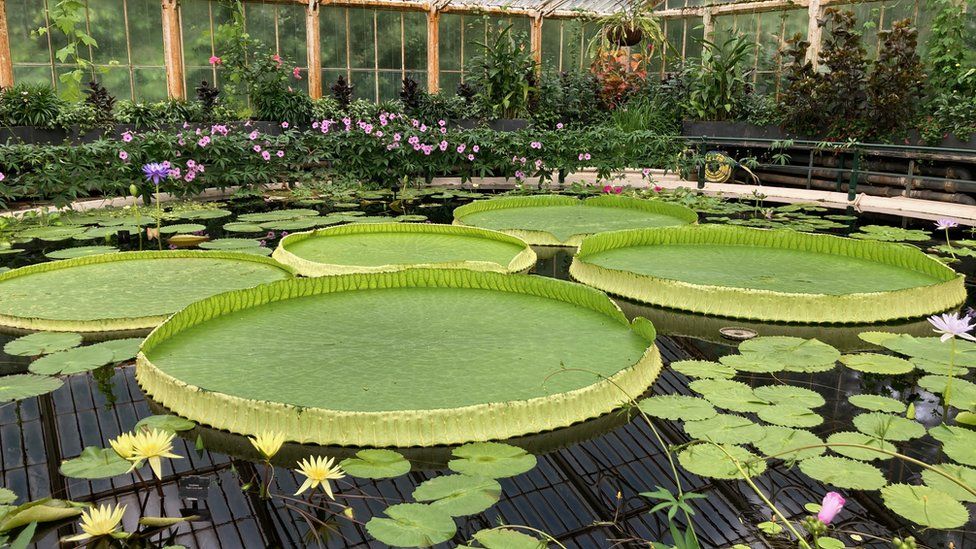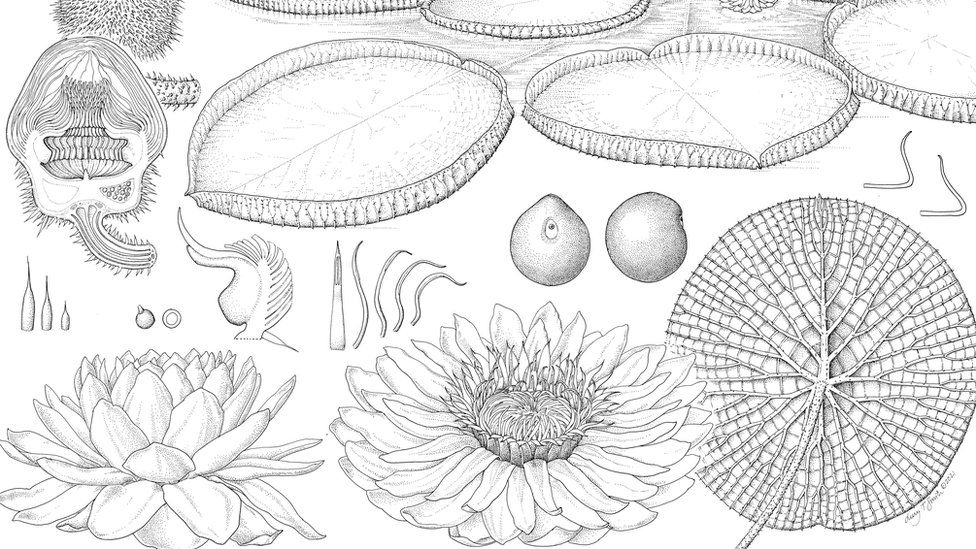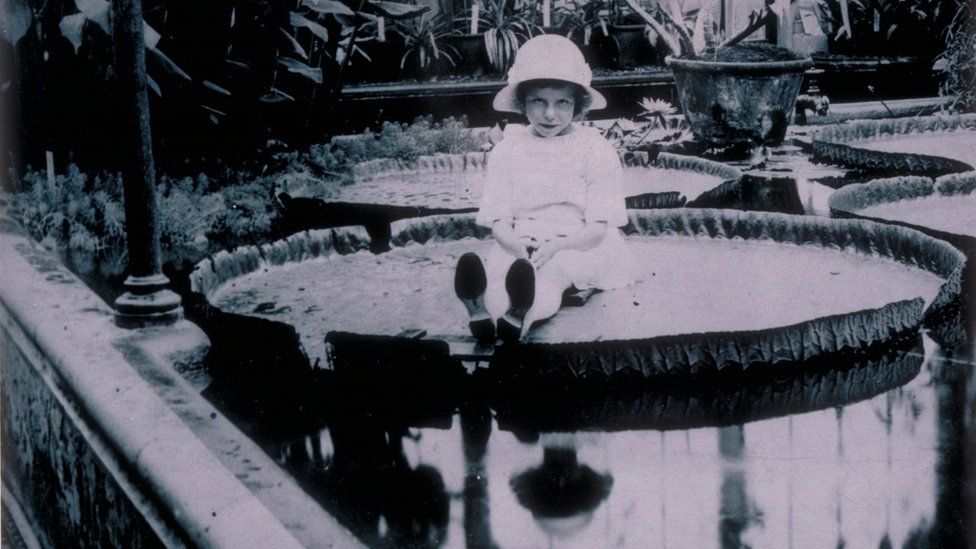Scientists discover new giant water lily species
Опубликовано 2022-07-04 13:00

A new species of giant water lily has been discovered - and it’s been hiding in plain sight for 177 years.
The huge plant had been in the archives of the Royal Botanic Gardens, Kew and was growing in a number of aquatic collections but it was mistakenly identified as another species.
Now a detailed scientific study has revealed that it is new to science.
It also holds the record as the world's largest water lily, with leaves growing more than 3m (10ft) wide.
The plant has been called Victoria boliviana - named after Bolivia, where it grows in a single water basin in part of the Amazon river system.
Horticulturist Carlos Magdalena, one of the world’s leading water lily experts, long suspected that the plant was different from the other two known giant species, Victoria amazonica and Victoria cruziana.
So scientists from Bolivia - from the National Herbarium of Bolivia, Santa Cruz Botanic Gardens and Public Botanic Garden La Rinconada - donated some seeds to Kew.
He told BBC News: “It meant we could grow it side-by-side with the two other species under exactly the same conditions. Once we did this we could very clearly see that every single part of the plant was totally different.”
He described the find as the “highlight” of his career.
 IMAGE SOURCE,LUCY SMITH
IMAGE SOURCE,LUCY SMITHWorking alongside Carlos, botanical illustrator Lucy Smith made detailed scientific drawings of all three species.
This also involved heading into the glasshouse at night because water lily flowers only come out in the dark.
She said: “I was able to get access to the flowers, and also by looking at the leaves, I could, as an illustrator, highlight those differences that I saw.
“And in fact, while I was drawing those differences, they became even stronger in my mind and I found new ways of telling them apart.”
She added: “Maybe I’m biased, but out of the three species I think [the new species] has one of the most beautiful flowers.”
 IMAGE SOURCE,RBG KEW
IMAGE SOURCE,RBG KEWKew has a long history with the plants - the Waterlily House was built in 1852 to showcase its collections.
The giants - discovered in the 1800s - were a natural wonder of the age, and the genus was named after Queen Victoria.
But the new discovery shows that water lilies still have some surprises, and scientists say there is still much to learn about them.
Dr Alex Monro, from RBG Kew, explained: ”None of the three species have been very well studied.
“We still don't know how many populations there are and how much they vary in size. We don't really understand the pollination biology very well. We don't know a lot about the dispersal of the species - how it transmits itself from one place to another.
“So there are still many unknowns. And I think, because they're so huge - so obvious - people haven't really thought to study them in that much detail.”
 IMAGE SOURCE,CARLOS MAGDELENA
IMAGE SOURCE,CARLOS MAGDELENAThe description of the plant is published in the journal Frontiers in Plant Biology.
Читайте также:
Сергей Грищак установил фотоловушки возле Чернобыля. Камера зафиксировала невероятное!
Electricity-eating microbes might sound like something straight out of a science fiction novel. In fact their behaviour is not quite as exotic as it might first appear.
A new camera system is making it possible for humans to see colors in the way animals do, opening up a vivid new perspective on the natural world.
Среди отмеченных стран как лучшие для жизни - ни одной Азиатской и Африканской страны. А также ни одной страны американского континента кроме Канады
|
Оставлять комментарии могут только зарегистрированные пользователи. Войдите в систему используя свою учетную запись на сайте: |
||
 Life Science and Technologies
Life Science and Technologies